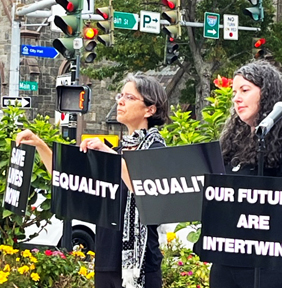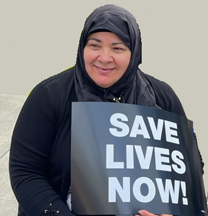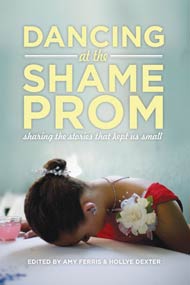Peace Vigil in Westchester Spotlights Healing
People are struggling to process the rapidly unfolding events that have taken place since the Hamas attacks in Israel on October 7. There have been demonstrations and counter-demonstrations focusing on both the hostage-taking and carnage in southern Israel, and the dire situation facing Palestinians in the Gaza Strip as casualties from bombings continue to mount.
On October 19 at 4:30 p.m., I was at a peace vigil in Westchester organized by WESPAC. Other groups had signed on as endorsers. The co-organizer I spoke with preferred to underscore the message of the gathering and to give comments solely on background. She said that the decision not to do interviews or have speeches emanated from the desire to place front and center “a yearning for peace that was about embracing everyone’s trauma.”
During the fifteen minutes before the program began, I spoke with different attendees to ask why they were there and what being in this particular community meant for them.
The first person I spoke with was Ola Nosseir, the founder of Our Common Beliefs. She has been doing interfaith work since 2001. In the period between 2014-2016, Nosseir experienced an uptick in Islamophobia in Westchester, specifically aggressions directed at her by white male drivers while she was on the road. She reported a particularly ominous one to the police.
“Everything starts with your neighbor,” Nosseir told me. “We need to focus on our commonality. Our blood is all red.” As our conversation wound down, Nosseir said quietly, “Peace is a message I’d like to get out there.”
Renaissance Plaza, the highly trafficked middle of White Plains, served as the assembly spot. People had been asked to wear black and were given dove peace pins upon their arrival. Participants were requested to follow the protocol of using supplied signs only. They were given black placards printed with simple messages in bold white lettering: SAVE LIVES NOW; OUR FUTURES ARE INTERTWINED; PEACE; EQUALITY. The only other verbiage I saw was on a button worn by a man, which read, “Slash the military budget.”
The late afternoon air was cool but comfortable. People sat on supplied fold-out chairs, pink and purple yoga mats, or they stood with their placards facing traffic. There were wearers of kippot and hijabs in the crowd of about one hundred. In the shadow of a tall glass building adjacent to a stone-built church, signs connoting Main Street and City Hall, and the watchful eyes of several police officers leaning against a patrol car, the program commenced. Birds flew overhead.
First up was a Sanskrit mantra recited by one of the organizers. Then, the reading of an eight-stanza poem by Drew Paton, written to be read at the vigil, was shared.
If ever they ask you,
“Which side are you on?”
Tell them, plainly, “I stand with the people.”
Each woman delivered an alternating verse. It wasn’t until much later that I learned that one was Palestinian and the other was Jewish.
Recommendations from Palestinian and Jewish allies comprised the music playlist to resonate with the spirit and intent of the gathering. There were songs in Arabic and Hebrew. Behind the women, a flag with an image of the earth set against a background of blue, fluttered gently with the breeze.
When a song with the words Peace, Salaam, Shalom came on, those assembled picked up the accompanying drum beat and began chanting the words rhythmically.
Then, there was a silent march around the block with participants holding their signs. Yellow-vested marshals accompanied the procession as it passed Starbucks, small shops, and commuters waiting to catch their buses home. Some onlookers seemed confused, while others gave the thumbs up—perhaps not knowing the marchers’ exact mission but nevertheless supporting the sentiments.
The experience embodied a setting where no one argued about who was right and who was wrong. That was why it felt so healing.
There was a mix of generations present. I asked one young woman, 18, about her motivation for turning out. “It’s complicated,” she said hesitatingly. “It’s not about sides. It’s not a sports game. People just want to be safe.” The woman standing beside her, her mother, nodded in agreement. Her daughter continued, “People are experiencing a lack of humanity.”
The last person I spoke with was an older man. “Why are you here?” I asked him. He reflected while choosing his words. “I am pained by what’s happening to innocent people,” he responded.
The last verse of Paton’s poem reverberated in my mind:
If ever they ask you, “Which side are you on?”
Say, “It doesn’t work like that.”
Tell them you stand with the people.
Then stand where the people are at.
Photos: Marcia G. Yerman






